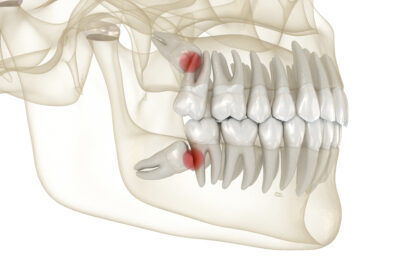Although oral cancer is not one of the more common or well-known types of cancer, it has a relatively low survival rate because it is often not treated until it has already reached a late stage. In fact, the five year survival rate only averages about 57% nationwide. Identifying the signs of oral cancer while they’re still in the early stages is key to successful treatment and long term survival. Treatment options for oral cancer vary depending on the stage the patient is diagnosed with and where in the mouth the cancer is located. Some common treatment options include:
Surgical Removal of Cancerous Cells and Tumors
In Stage 0 oral cancer, the cancerous cells have not yet grown into the deeper layers of tissue. The most common treatment option at this stage is “thin resectioning,” during which an oral surgeon (or dentist with specialized training in oral pathology) will remove the topmost tissue along with some normal tissue.
In Stage I and Stage II, surgical removal of small to large tumors is the preferred method of treatment for cancers occurring on the lip, floor and roof of the mouth, front of the tongue, cheeks, and gums. In cases where all of the cancerous cells could not be surgically removed, radiation therapy may be used as an adjunct.
In Stage III and Stage IV oral cancer, surgery is almost always combined with radiation and/or chemotherapy.
Chemotherapy
In the broadest sense, chemotherapy can refer to any type of chemical compound used to treat any type of disease (for instance, antibiotics are considered chemotherapy for a respiratory infection). However, most people associate the term with drugs used in the treatment of cancer. Over a hundred chemotherapy drugs are in use today and, as opposed to localized treatment options like surgery and radiation therapy, chemotherapy can reach cancerous cells anywhere in the body. With regards to oral cancer, chemotherapy is most often used in conjunction with surgery and radiation therapy to treat Stage III and IV oral cancer. However, it is sometimes used along with surgery in the treatment of Stage I and II oral cancer to ensure that any abnormal cells left after surgery are eradicated.
Radiation Therapy
Like surgery, radiation is a localized treatment, meaning it treats only a single area. Radiation therapy can be administered in several ways, including external-beam therapy using a machine outside the body and internal therapy, which places radioactive material inside the body near the cancerous cells. Once in place, the high-energy radiation kills cancer cells. However, precautions must be taken to minimize the locality of radiation therapy, since the high-energy beams can also damage healthy cells.
Stage 0 oral cancer that returns after surgical removal (referred to as “recurrent” oral cancer) might need additional treatment with radiation.
In Stage I and II oral cancer, radiation is often used as an adjunctive treatment with surgery or on its own in places like the back of the tongue and the soft palate.
In Stage III and IV oral cancer that has spread (or is likely to spread) to the lymph nodes, radiation is almost always used to complement surgery.
About Shawn Hofkes, DDS
With advanced training in oral and maxillofacial surgery and oral pathology, Shawn Hofkes, DDS is qualified to diagnose and treat all stages of oral cancer from our comfortable, state-of-the-art dentist office in Cerritos, CA. To schedule your appointment or consultation with Dr. Hofkes, contact us today. We proudly serve patients of all ages from Cerritos, Lakewood, Long .hBeach, Buena Park, and all surrounding communities.














